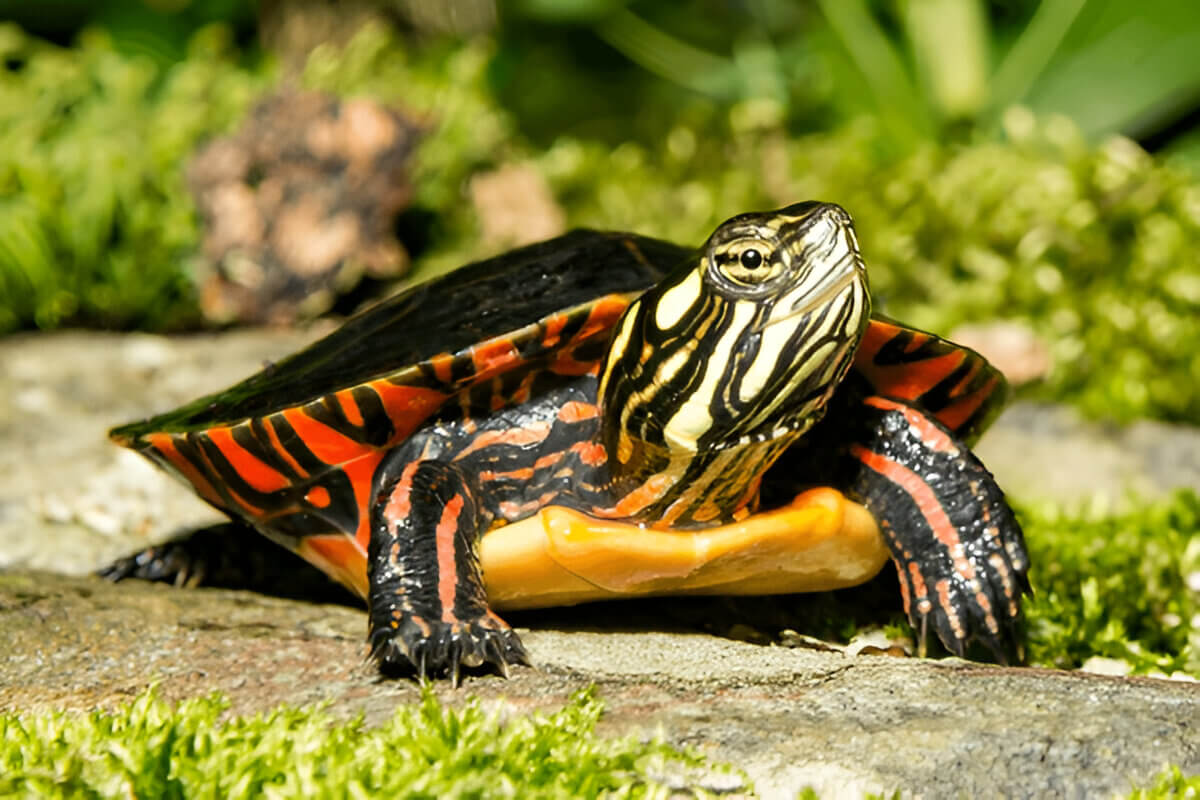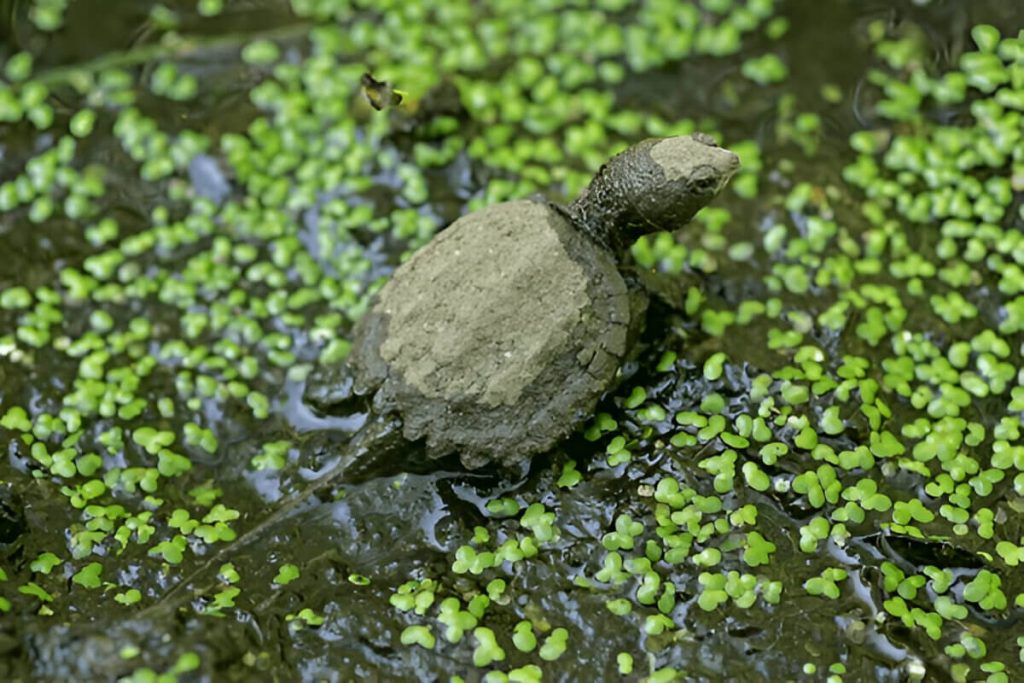
Turtles inhabit diverse freshwater environments, with painted and snapping turtles notable for their distinct characteristics. This article explores their physical traits, habitats, diets, behaviors, lifespans, and conservation statuses. Readers will learn to identify each species and understand their roles in ecosystems. This guide offers insights for wildlife enthusiasts or those curious about these reptiles.
How to Identify Painted Turtles vs Snapping Turtles
When it comes to distinguishing between painted turtles and snapping turtles, understanding their physical characteristics is key. One of the most noticeable differences lies in their turtle shell differences. Painted turtles have smooth, flat shells with bright markings that often include red, yellow, or orange stripes along the edges. In contrast, snapping turtles possess rugged and serrated shells that are typically darker in color with a more muted appearance.
Size comparison is another factor to consider when identifying these two species. Painted turtles tend to be smaller, usually reaching an average length of 5 to 7 inches. Snapping turtles, on the other hand, can grow significantly larger (often measuring between 10 and 18 inches in length) and are generally more robust.
Color patterns also play a crucial role in identification. The painted turtle’s vivid colors extend beyond its shell; its skin features similar bright streaks and spots that complement its overall appearance. Meanwhile, snapping turtles have a more uniform coloration with earthy tones like brown or black dominating both their shells and skin.
Examining the physical appearance of these turtles offers additional clues. Painted turtles have webbed feet suited for swimming and a streamlined body shape ideal for life in water. Snapping turtles stand out with their powerful jaws and long tails adorned with ridged scales, giving them an almost prehistoric look.
Where Do Painted Turtles and Snapping Turtles Live?

Painted turtles and snapping turtles are fascinating creatures with unique habitat preferences that reflect their distinct lifestyles. Understanding the natural habitats of these turtles can provide valuable insights into their behaviors and ecological roles.
Painted turtles are typically found in calm, shallow waters such as ponds, lakes, marshes, and slow-moving rivers. Their ideal aquatic environment consists of soft, muddy bottoms rich in vegetation. This setting not only provides ample food sources but also offers basking sites where they can absorb sunlight to regulate their body temperature. The presence of logs or rocks is crucial for painted turtles as they spend a significant amount of time basking out of the water.
In contrast, snapping turtles prefer more varied aquatic environments that include deeper waters and a mix of substrates. They are often found in larger bodies of water like lakes and rivers but also inhabit swamps and marshes where they can find abundant prey. Snapping turtles have a more robust build suited for murkier waters with dense vegetation or submerged debris where they can camouflage effectively while hunting.
The key differences between the natural habitats of painted and snapping turtles highlight their adaptive strategies for survival: painted turtles thrive in sunlit areas with plenty of basking opportunities, whereas snapping turtles excel in environments that provide cover for ambush predation. Understanding these habitat requirements is essential for conservation efforts aimed at preserving these remarkable species and ensuring their continued presence in diverse ecosystems.
What Do Painted Turtles and Snapping Turtles Eat?
When it comes to understanding the dietary habits of turtles, painted turtles and snapping turtles offer a fascinating study in contrasts. These two species showcase the diversity in turtle diets, highlighting the differences between herbivorous and carnivorous tendencies.
Painted turtles are primarily omnivores with a preference for plant-based foods. Their diet consists largely of aquatic vegetation, algae, and small insects or fish. This balanced diet allows them to thrive in various aquatic environments where they can easily access both plant matter and occasional protein sources. Their feeding habits reflect an adaptability that enables them to make use of available resources efficiently.
On the other hand, snapping turtles are more carnivorous in nature. They have a predilection for meat-based meals, often consuming fish, frogs, birds, and even small mammals when given the opportunity. Snapping turtles are known for their opportunistic feeding behavior, relying on stealth and their powerful jaws to capture prey. This predatory lifestyle is supported by their habitat choices—often murky waters where they can remain undetected until striking.
The comparison between these two species highlights the spectrum of dietary strategies among turtles: from herbivore-dominant diets seen in painted turtles to the carnivore-leaning tendencies of snapping turtles. Understanding these feeding habits not only informs us about their ecological roles but also guides conservation efforts tailored to preserving their natural habitats and food sources.
Comparing the Temperament of Painted and Snapping Turtles
When it comes to understanding turtle behavior, the distinctions between painted turtles and snapping turtles are quite fascinating. Conducting a thorough turtle behavior analysis reveals that each species exhibits unique temperamental traits shaped by their environments and survival strategies.
Painted turtles are generally known for their more sociable demeanor. They often bask together in groups, displaying a level of social behavior that is not as common in many other turtle species. This communal basking not only helps them regulate their body temperature but also suggests a form of social tolerance among individuals. Painted turtles tend to be less aggressive, making them relatively approachable in their natural habitats.
In contrast, snapping turtles are renowned for their aggression and defensive nature. This characteristic is particularly evident when they feel threatened or cornered. Aggression in snapping turtles serves as an effective survival mechanism, deterring potential predators with their powerful bites and intimidating presence. Unlike painted turtles, snapping turtles prefer solitary lives and are less likely to engage in the kind of social interactions observed among painted turtles.
Understanding these behavioral differences is crucial for anyone interested in observing or caring for these fascinating reptiles. Whether it’s appreciating the communal tendencies of painted turtles or respecting the territorial instincts of snapping turtles, recognizing these traits allows us to interact with them more responsibly and safely.
Life Cycle Insights for Both Turtle Species
The lifespan and reproductive habits of turtles can vary significantly between species, offering fascinating insights into their life cycles. When comparing the turtle lifespan of painted turtles and snapping turtles, distinct differences emerge that highlight the unique adaptations each species has developed to thrive in their environments.
Painted turtles are known for their relatively long lifespans, often living up to 40 years in the wild. This longevity is complemented by their steady and predictable breeding habits. Painted turtles typically reach sexual maturity at around 5 to 10 years of age. During the breeding season, which usually occurs in late spring or early summer, females lay clutches of eggs on land near water sources. The incubation period for these eggs lasts about 70 to 80 days, after which hatchlings make their way back to water.
In contrast, snapping turtles exhibit different reproductive behaviors and lifespans. They can live even longer than painted turtles, with some individuals reaching ages of over 50 years. Snapping turtles also take longer to mature sexually, often not breeding until they are between 15 and 20 years old. Their nesting process is similar in timing but differs slightly in frequency; snapping turtle females may lay a single clutch per year with a variable number of eggs depending on environmental conditions.
Understanding reproduction in freshwater turtles like these provides valuable insights into how each species has adapted its life cycle strategies for survival and success within diverse aquatic ecosystems. These differences not only underscore the remarkable diversity among turtle species but also emphasize the importance of conservation efforts tailored to the specific needs and characteristics of each type of turtle.
The Conservation Status of Painted and Snapping Turtles
Painted and snapping turtles, two of North America’s most iconic freshwater species, are facing significant challenges that have raised concerns about their conservation status. Understanding the endangered species status of these turtles is crucial for implementing effective conservation efforts.
The painted turtle, known for its vibrant shell markings, is not currently listed as endangered on a global scale. However, certain regional populations are experiencing declines due to habitat destruction, pollution, and road mortality. Conservation efforts for freshwater turtles like the painted turtle often focus on habitat protection and restoration. Initiatives such as creating safe road crossings and preserving wetland habitats play a vital role in maintaining healthy populations.
On the other hand, the snapping turtle faces more pressing threats that have led to a more precarious conservation status in some areas. Overharvesting for meat and the pet trade has significantly impacted their numbers. Additionally, these turtles face similar challenges as painted turtles with habitat loss and environmental contamination further exacerbating their decline.
Conservationists are actively working to address these population challenges faced by both species through various strategies. Public education campaigns aim to raise awareness about the importance of protecting turtle habitats while encouraging responsible behavior around wildlife. Legal protections also help regulate hunting practices to prevent overexploitation.
While neither species is globally classified as endangered yet, localized threats necessitate ongoing vigilance and targeted conservation actions to ensure that painted and snapping turtles continue to thrive in their natural environments.